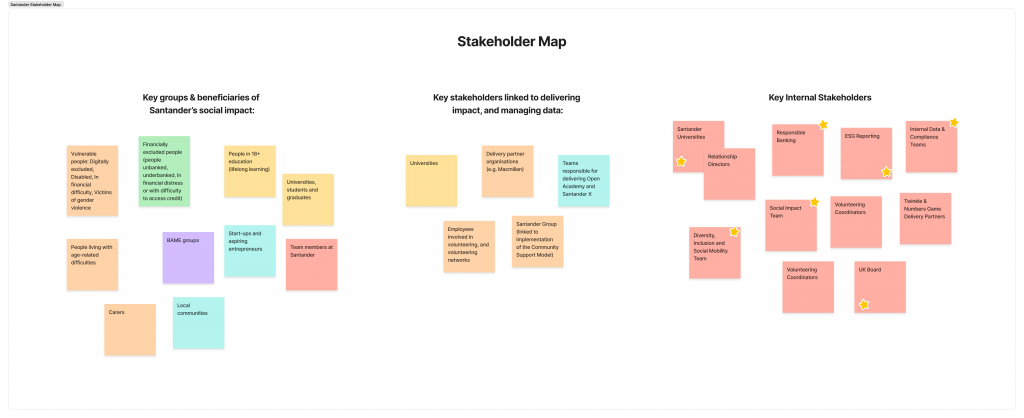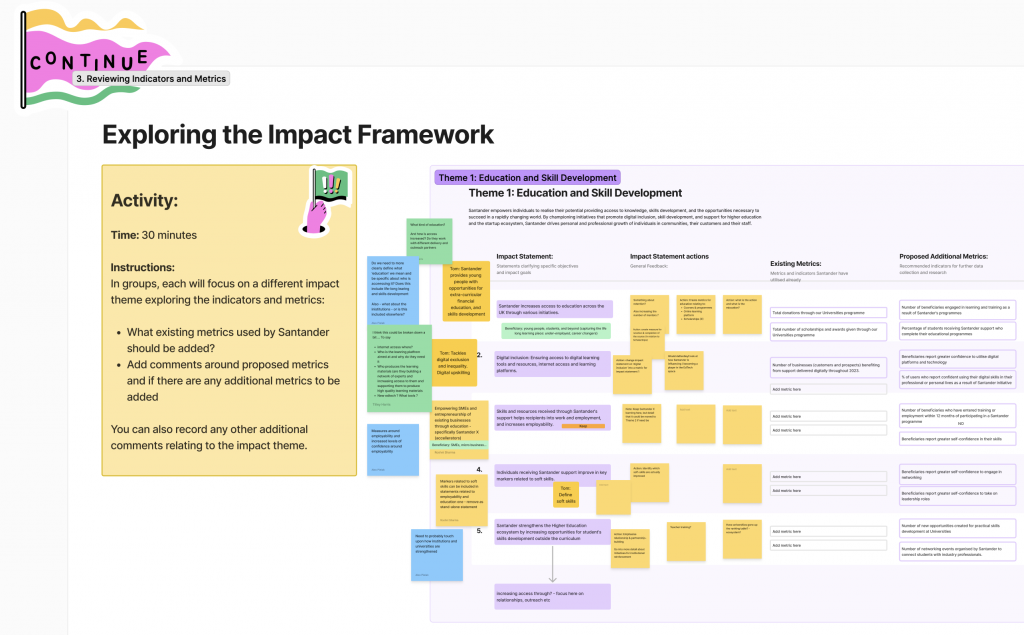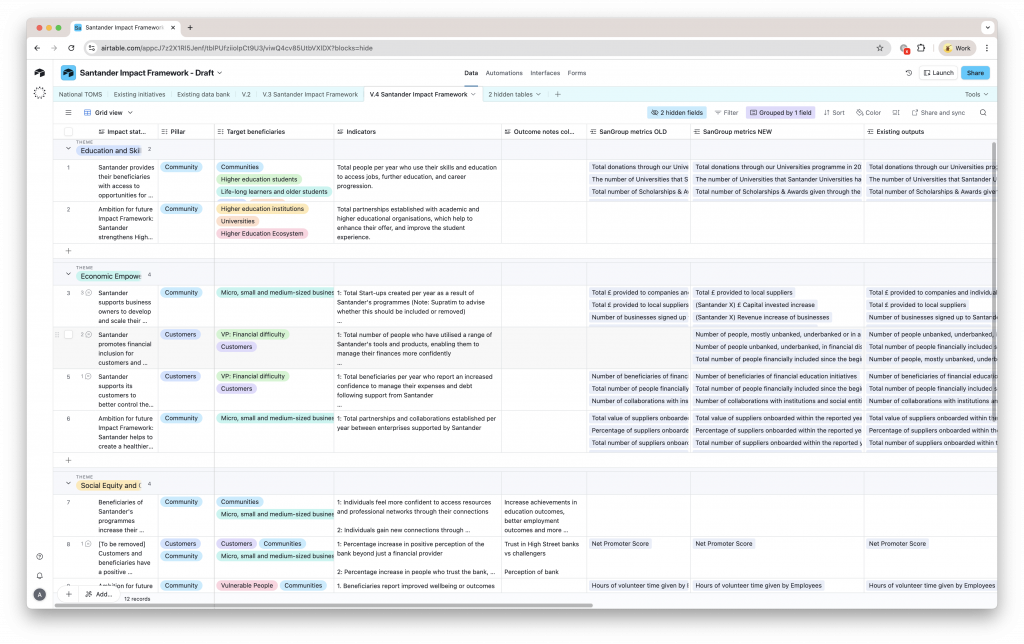The Brief:
Santander UK’s Social Enterprise team needed an impact framework that satisfied competing organisational priorities: UK board simplification requirements versus Group-level international reporting complexity, whilst balancing commercial objectives with social impact goals under strict financial sector regulations.

Role
Lead Service Designer
Team
User Researcher
Impact Consultant
Stakeholder Manager
Santander UK and Group stakeholders
Tools
Miro, Figma, service blueprinting, co-design workshops
1. Discovery
I led the discovery phase to understand the complex stakeholder landscape and reframe competing constraints as collaborative opportunities.

Key Actions and Discoveries:
- Conducted cross-team interviews spanning UK Social Enterprise, ESG, data, and reporting departments to map stakeholder priorities
- Used service blueprinting to document workflows, revealing tensions between UK simplification and Group complexity
- Facilitated workshops reframing constraints as shared challenges rather than competing priorities
- Demonstrated alignment between Santander’s “radically simple” ambition and user-centred design principles

2. Ideate
I facilitated collaborative ideation sessions to explore how regulatory and organisational constraints could become creative parameters driving innovative solutions.
Key Ideation: Activities:
- Ran co-design workshops with UK and Group representatives at junior and senior levels
- Used Miro for collaborative feedback capture and democratic voting on design decisions
- When workshops surfaced tensions around undisclosed Group metrics, organised separate sessions allowing each team to share concerns before collaborative problem-solving
- Developed aspirational indicators working within regulatory frameworks whilst positioning for future policy changes

3. Design
I led the iterative design process to transform ideation concepts into a comprehensive framework through co-design and stakeholder alignment.
Key Design Actions:
- Created modular framework components satisfying both UK and Group requirements without duplicate work
- Designed consensus-building techniques using interactive Figma prototypes with upvoting and commenting features
- Conducted individual feedback sessions with key stakeholders to iterate solutions between group workshops
- Facilitated final walkthrough session where both teams discussed concerns and agreed on final outputs


4. Delivery
The framework successfully balanced competing priorities whilst establishing new methodologies for complex stakeholder alignment.
Final Outcomes:
Board Approval
UK board and Group directors approved framework following collaborative process
Active Implementation
Framework remains in regular use by UK team despite subsequent team reductions, demonstrating practical value and usability
Reusable Methodology
Developed reusable constraint-navigation methodology for enterprise clients
Design Patterns
Created stakeholder management patterns now standard for complex alignment challenges